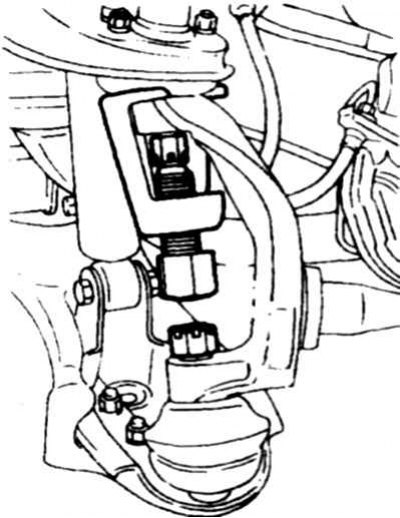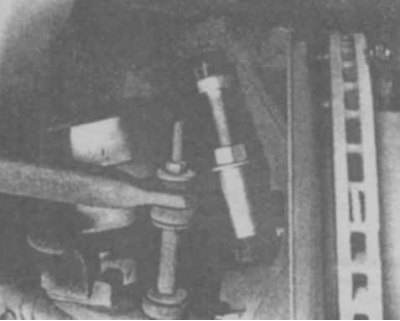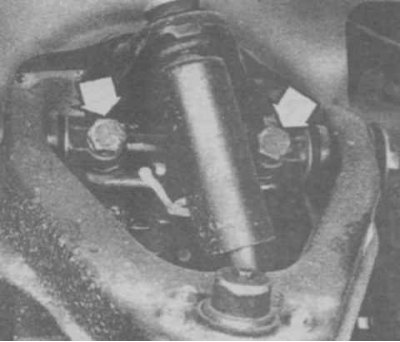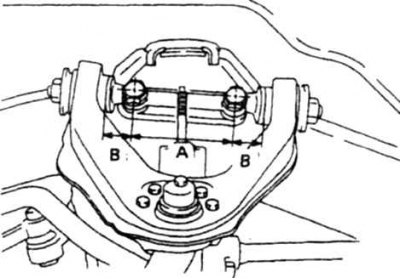2. Remove the wheel.
3. Turn away the top nut of the shock-absorber and squeeze the shock-absorber.
4. Jack up the lower arm slightly.
5. Loosen the top pivot nut. Press the support pin out of the knuckle eye with a puller (photo). Loosen the nut.

7.5a Pressing out the pin of the upper support using a tool

7.5b The simplest fixture for pressing out a support, made from a bolt, nut and socket
6. Turn away bolts of fastening of an axis of the lever to a frame and remove the lever in gathering with a support and adjusting washers. Pay attention to the number and order of the shims (photo).

7.6 Upper suspension arm axle bolts
7. Turn away nuts and remove a support. The support is non-separable and, in case of wear, is replaced entirely.
8. Replace hardened or damaged lever bushings. To do this, unscrew the axle nuts and press the axle out of the lever (need a press).
9. Before pressing new bushings, moisten them with soapy water. The bushings are pressed in on a hydraulic press so that the shoulder on the bushing rests against the reciprocal recess in the lever sleeve.
10. Insert the axle and fit the inner washers with their rounded sides facing inward.
11. Press in the outer bushings.
12. Screw on the axle nuts.
13. Install the support on the lever.
14. Install the lever, making sure the shims are intact. Tighten the bolts to the specified torque.
15. Check dimensions A and B (photo). Compare them with those given in the Technical Data and adjust if necessary.

7.15 Check lever alignment by measuring dimensions A and B
16. Remaining operations are carried out in reverse order. Bolts and nuts finally tighten after lowering the car on wheels. Check and adjust wheel alignment.